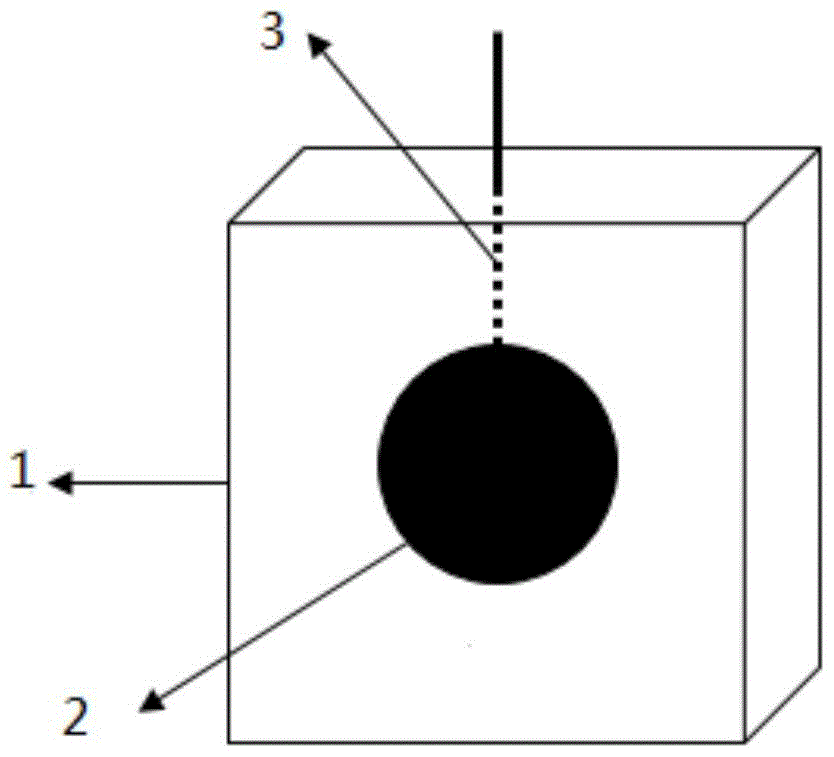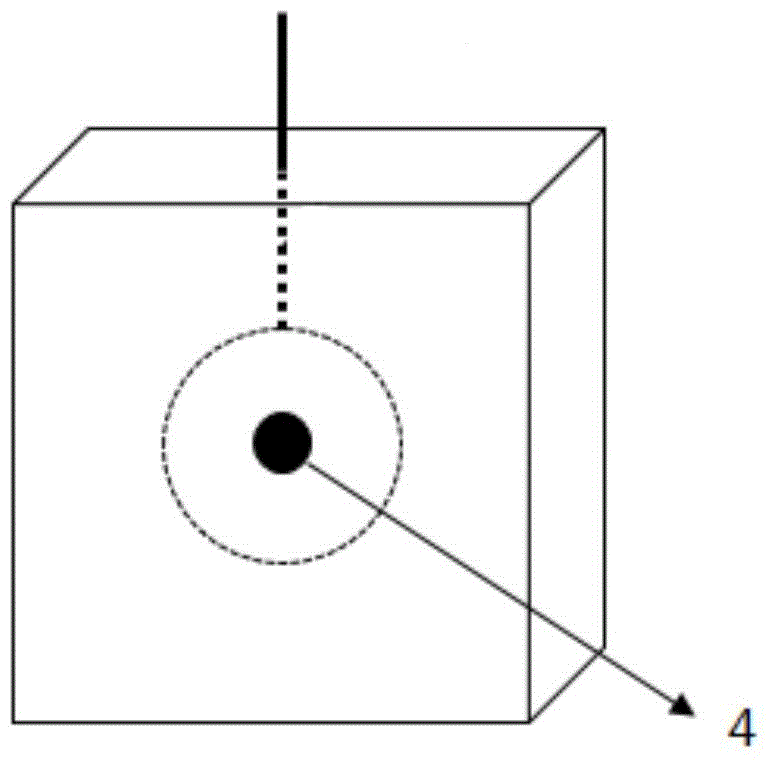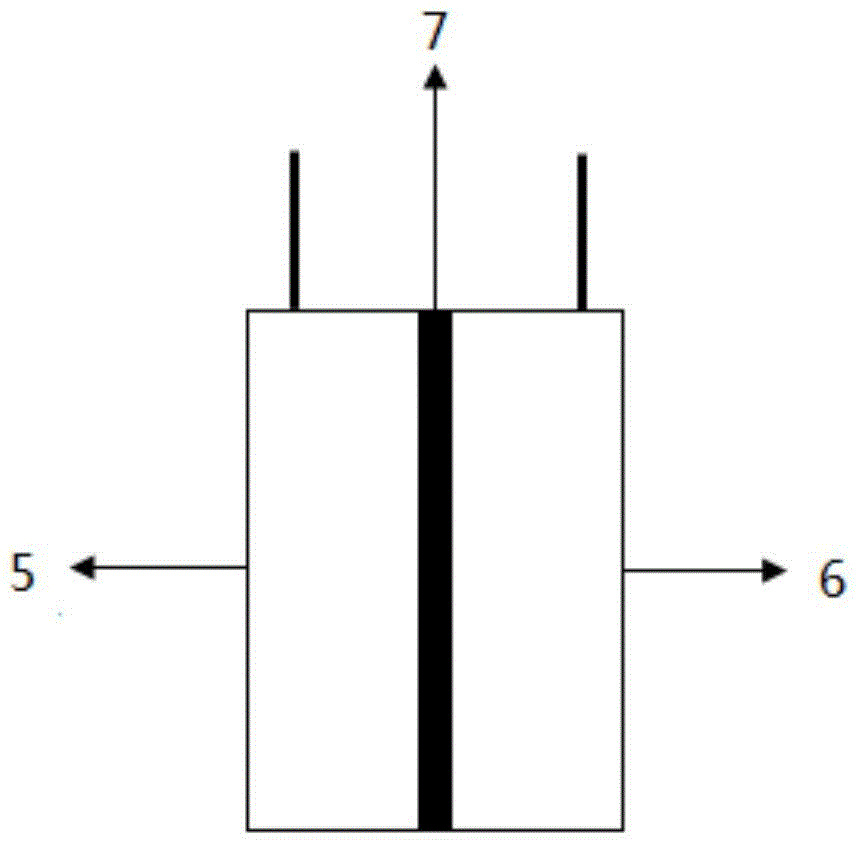A material component detection method of electronic tongue pulse relaxation signal curve
A relaxation signal and detection method technology, applied in the direction of electrochemical variables of materials, etc., can solve the problems of insufficient precision, insufficient information, and inability to detect and analyze components, and achieve the effect of wide detection range and accurate detection results.
- Summary
- Abstract
- Description
- Claims
- Application Information
AI Technical Summary
Problems solved by technology
Method used
Image
Examples
Embodiment 1
[0043] 1. Configuration sample:
[0044] Sample A: 0.2mol / L potassium chloride solution; Sample B: 0.5mol / L potassium chloride solution;
[0045] Sample C: 0.7mol / L potassium chloride solution; reference substance D: 1.0mol / L potassium chloride solution.
[0046] 2. Sensor preparation:
[0047] 1) Electrode preparation: Electrode preparation: Embed No. 1 platinum column with a diameter of 0.5 cm and a height of 0.3 cm in the center of a square face of a 1 cm × 1 cm × 0.5 cm polytetrafluoroethylene cube; on the top surface perpendicular to the square face Embedded in a copper column with a diameter of 1.5mm and a height of 3cm, and connected to the No. 1 platinum column; embedded in the center of another square surface opposite to the above square surface, a No. 2 platinum column with a diameter of 1.5mm and a height of 0.2cm, and connected with the No. 1 platinum column is connected to make an electrode. Prepare two identical electrodes in this way;
[0048] 2) Cut the fil...
Embodiment 2
[0053] 1. Configuration sample:
[0054] Test sample E: 0.3mol / L citric acid + 0.4mol / L sucrose + 0.6mol / L sodium chloride aqueous solution
[0055] Reference substance F: 0.5mol / L citric acid + 0.8mol / L sucrose + 1.0mol / L sodium chloride aqueous solution
[0056] 2. Sensor preparation:
[0057] 1) Electrode preparation: Electrode preparation: Embed No. 1 platinum column with a diameter of 0.5 cm and a height of 0.3 cm in the center of a square face of a 1 cm × 1 cm × 0.5 cm polytetrafluoroethylene cube; on the top surface perpendicular to the square face Embedded in a copper column with a diameter of 1.5mm and a height of 3cm, and connected to the No. 1 platinum column; embedded in the center of another square surface opposite to the above square surface, a No. 2 platinum column with a diameter of 1.5mm and a height of 0.2cm, and connected with the No. 1 platinum column is connected to make an electrode. Prepare two identical electrodes in this way;
[0058] 2) Cut the filt...
Embodiment 3
[0064] 1. Configuration sample:
[0065] Sample G: 4mg / L melamine-milk powder solution;
[0066] Sample H: 8mg / L melamine-milk powder solution;
[0067] Sample I: 12mg / L melamine-milk powder solution;
[0068] Reference substance J: 15mg / L melamine-milk powder solution.
[0069] 2. Sensor preparation:
[0070] 1) Electrode preparation: Electrode preparation: Embed No. 1 platinum column with a diameter of 0.5 cm and a height of 0.3 cm in the center of a square face of a 1 cm × 1 cm × 0.5 cm polytetrafluoroethylene cube; on the top surface perpendicular to the square face Embedded in a copper column with a diameter of 1.5mm and a height of 3cm, and connected to the No. 1 platinum column; embedded in the center of another square surface opposite to the above square surface, a No. 2 platinum column with a diameter of 1.5mm and a height of 0.2cm, and connected with the No. 1 platinum column is connected to make an electrode. Prepare two identical electrodes in this way;
[00...
PUM
 Login to View More
Login to View More Abstract
Description
Claims
Application Information
 Login to View More
Login to View More - R&D
- Intellectual Property
- Life Sciences
- Materials
- Tech Scout
- Unparalleled Data Quality
- Higher Quality Content
- 60% Fewer Hallucinations
Browse by: Latest US Patents, China's latest patents, Technical Efficacy Thesaurus, Application Domain, Technology Topic, Popular Technical Reports.
© 2025 PatSnap. All rights reserved.Legal|Privacy policy|Modern Slavery Act Transparency Statement|Sitemap|About US| Contact US: help@patsnap.com



